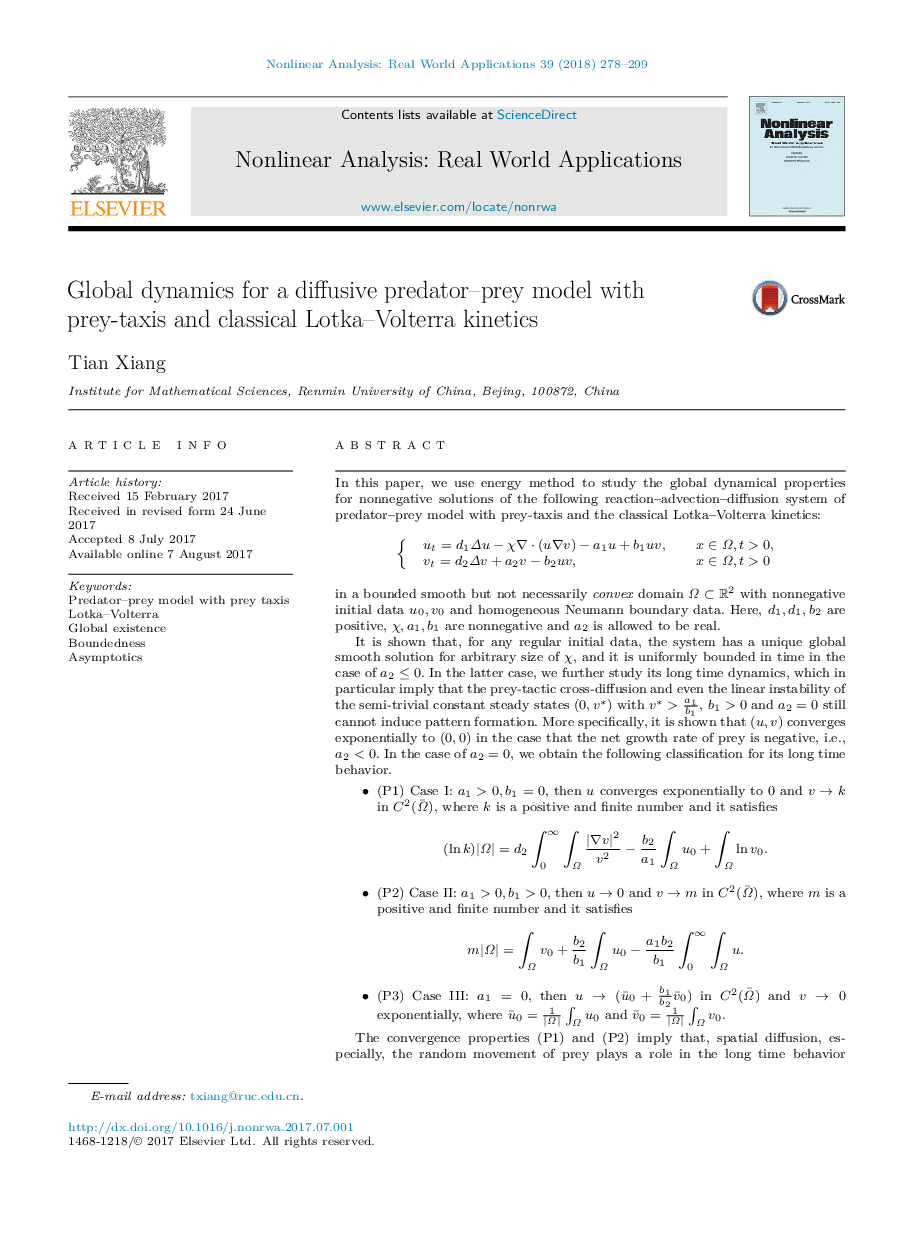| کد مقاله | کد نشریه | سال انتشار | مقاله انگلیسی | نسخه تمام متن |
|---|---|---|---|---|
| 5024384 | 1470390 | 2018 | 22 صفحه PDF | دانلود رایگان |
In this paper, we use energy method to study the global dynamical properties for nonnegative solutions of the following reaction-advection-diffusionsystem of predator-prey model with prey-taxis and the classical Lotka-Volterra kinetics: ut=d1ÎuâÏââ
(uâv)âa1u+b1uv,xâΩ,t>0,vt=d2Îv+a2vâb2uv,xâΩ,t>0in a bounded smooth but not necessarily convex domain ΩâR2 with nonnegative initial data u0,v0 and homogeneous Neumann boundary data. Here, d1,d1,b2 are positive, Ï,a1,b1 are nonnegative and a2 is allowed to be real.It is shown that, for any regular initial data, the system has a unique global smooth solution for arbitrary size of Ï, and it is uniformly bounded in time in the case of a2â¤0. In the latter case, we further study its long time dynamics, which in particular imply that the prey-tactic cross-diffusion and even the linear instability of the semi-trivial constant steady states (0,vâ) with vâ>a1b1, b1>0 and a2=0 still cannot induce pattern formation. More specifically, it is shown that (u,v) converges exponentially to (0,0) in the case that the net growth rate of prey is negative, i.e., a2<0. In the case of a2=0, we obtain the following classification for its long time behavior.
- (P1) Case I: a1>0,b1=0, then u converges exponentially to 0 and vâk in C2(ΩÌ), where k is a positive and finite number and it satisfies (lnk)|Ω|=d2â«0ââ«Î©|âv|2v2âb2a1â«Î©u0+â«Î©lnv0.
- (P2) Case II: a1>0,b1>0, then uâ0 and vâm in C2(ΩÌ), where m is a positive and finite number and it satisfies m|Ω|=â«Î©v0+b2b1â«Î©u0âa1b2b1â«0ââ«Î©u.
- (P3) Case III: a1=0, then uâ(uÌ0+b1b2vÌ0) in C2(ΩÌ) and vâ0 exponentially, where uÌ0=1|Ω|â«Î©u0 and vÌ0=1|Ω|â«Î©v0.The convergence properties (P1) and (P2) imply that, spatial diffusion, especially, the random movement of prey plays a role in the long time behavior and that the chemotaxis mechanism may have certain influence on its long time behavior. In particular, the long time behavior may not always be determined by its corresponding ODE system, which seems to be a rarely occurring phenomenon.
Journal: Nonlinear Analysis: Real World Applications - Volume 39, February 2018, Pages 278-299
